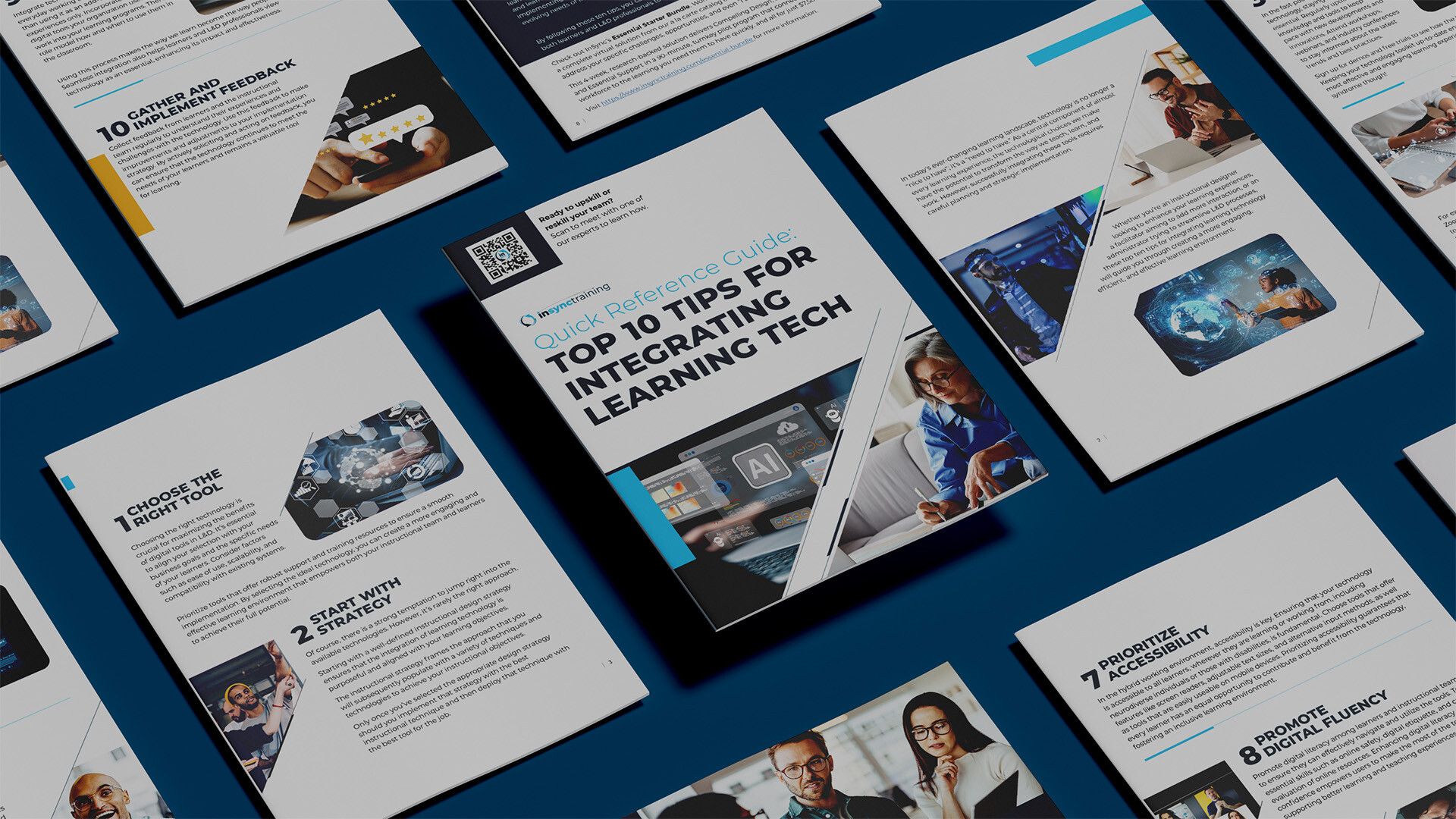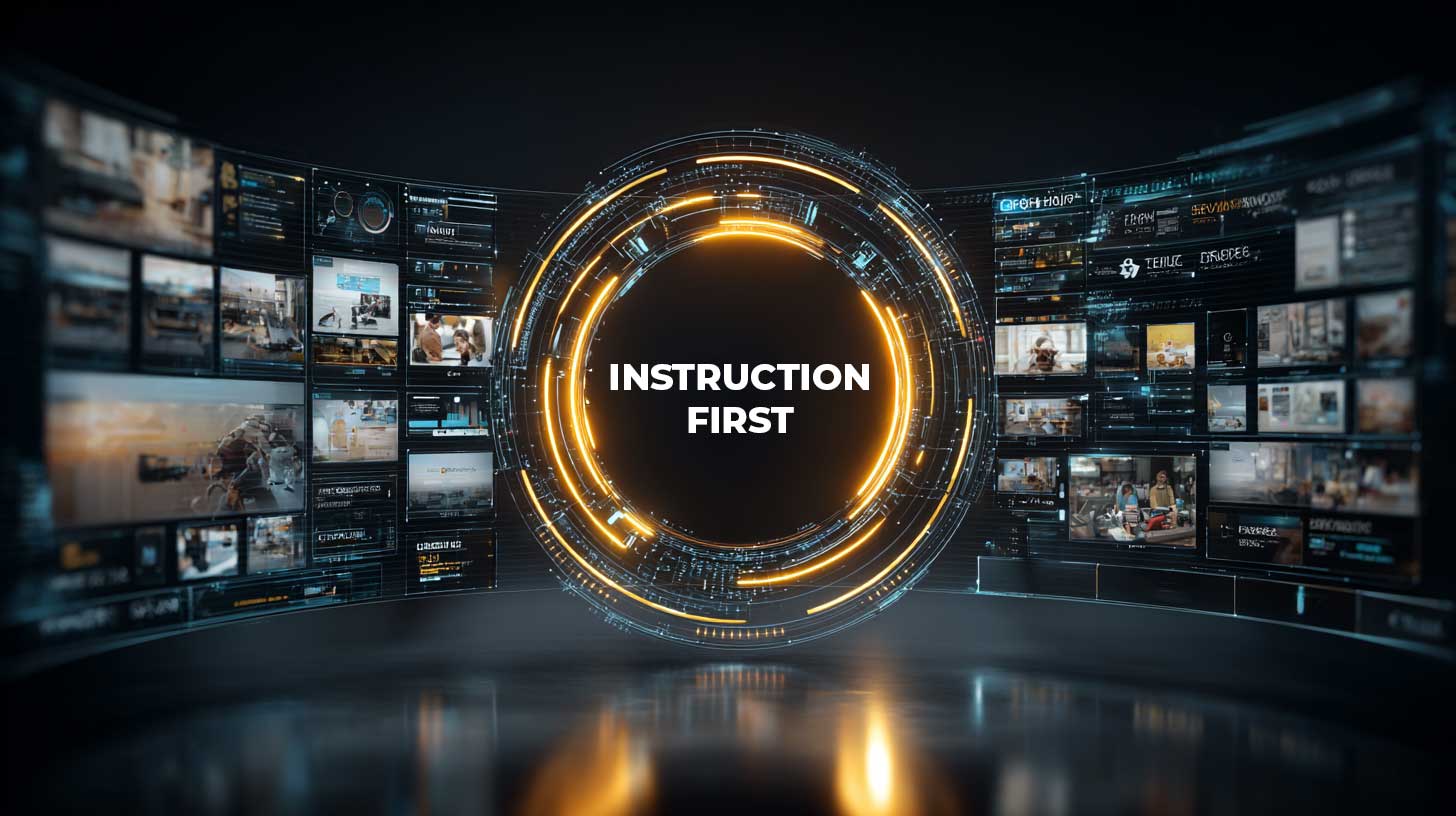Top 10 Tips for Integrating Learning Tech
In today’s rapidly evolving educational landscape, technology has shifted from being a luxury to an essential. As a core element of nearly every...
5 min read
 Jennifer Hofmann
:
Jun 18, 2024 9:00:00 AM
Jennifer Hofmann
:
Jun 18, 2024 9:00:00 AM


Read on—or get the big picture in our infographic Instructional Strategies, Techniques, and Technologies.
Planning for hybrid learning today requires a well-thought-out strategy. It's not just about choosing a technology platform anymore. You need to think about where learners are located and what device they're using, as well as ensuring your course design fits their learning goals.
Without a strategic design of content that is both relevant and accessible, learners may resort to finding content independently. This situation leaves the Learning & Development (L&D) department with no influence over the accuracy or applicability of the information accessed. In turn, it's hard to understand what people need to learn and whether the same information is being shared with all learners.
Our focus must extend beyond merely creating content. We need to plan the whole journey, taking into account what learners require in and beyond the structured blended learning program.
While you might think the main focus should be on technology choices, like eLearning platforms, artificial intelligence (AI), or mobile access, modern blended learning design goes further. It's about picking the right design strategy, using the best instructional method, and implementing this method with the most fitting instructional technology.
When it comes to blended learning, instructional design is now more critical than ever before. More importantly, a lack of instructional design is more obvious than ever before.
Instructional design for modern blended learning must be rigorously applied—a bad or less-than-effective design is much more apparent when the learner is exposed to a variety of instructional treatments that can’t be “made OK” by an instructor in the room. The BIG question in a blended solution is this: how to know which of the myriad techniques and technologies the situation calls for so that you can produce the best effect.
One of the challenges for instructional designers today is that there are a lot of concepts, tools, and terms that seem to be important—hardly a day goes by without some new theory or treatment recommendation being touted as the harbinger of groundbreaking change that will redefine how we instruct, learn, or assess.
New research into instructional tools, techniques, technology, and such is great, but the results and their interpretation generally leave a learning professional with little idea how to apply them. You still need to figure out how to leverage them strategically to connect the dots between all the learning objectives in a blended learning curriculum. The strategies, techniques and technologies below will help you connect those dots, and this infographic provides a quick helpful visual.
Understanding the complex world of blended learning can be made easier by categorizing key concepts into three main groups: instructional strategies, instructional techniques, and instructional technologies. This classification, although not exclusive, provides a coherent structure that allows for a more insightful exploration of blended learning.
Which instructional strategy is best suited to guiding learners toward achieving their specific learning objectives? The moment you finalize your instructional strategy, you've essentially set a comprehensive plan in motion to address the educational need. The strategy provides the framework that will be filled with an array of techniques and technologies aimed at fulfilling your instructional goal.
In essence, an instructional strategy is formed based on fundamental characteristics inherent in both the learners and the content. It's not a one-size-fits-all solution, but rather a tailored approach that considers the unique needs and nature of the learning audience as well as the specifics of the content.
Instructional strategies span a wide spectrum, from game-based learning and social collaborative learning to problem-based learning, self-directed learning, and case-based learning. Task-based instruction also is an integral part of this diverse mix. Each of these strategies offers its own unique advantages and can be selected based on the learning objectives and the audience's characteristics. By choosing the right strategy, we can create an environment conducive to effective learning and mastery of the subject matter.
Deciding on the most effective instructional technique (or a combination of techniques) is critical to the successful implementation of an instructional strategy. These techniques act as the pillars that support the overarching strategy. They are comparable to one another in that they can be interchanged without altering the intended outcome for the learner, although the experience itself may differ significantly.
However, that's not to imply that different techniques applied to identical content will yield identical experiences. For instance, self-paced computer-based instruction and traditional in-person teaching are fundamentally distinct approaches. Yet, regardless of the method employed, the learner's incremental progress toward the overall educational objective remains consistent.
Instructional techniques provide a framework outlining how learners will navigate through the instructional process. They can range from simulations, curated learning environments, and learning communities to gamification, case studies, and moderated discussions or lectures.
It's important to note that the requirements for assessment and evaluation should heavily influence the selection of appropriate techniques for a blended learning solution. Therefore, careful consideration should be given to these factors to ensure the best possible learning experience for all involved.
Determining which technologies and tools to use in order to support the instructional techniques is a crucial aspect of blended learning. These technologies, which encompass both authoring and delivery tools, are instrumental in deploying various instructional methods. For instance, lectures, a traditional teaching method, can be delivered in a physical classroom, through a virtual learning environment, by video content, or even via podcasts.
The choice of technology largely depends on the assessment and evaluation needs of your instructional design. Moreover, it's influenced by the context in which learners will be applying their newly acquired skills or knowledge. The aim is to deploy learning in the most authentic and relevant way possible, enhancing its real-world applicability.
While navigating the vast array of instructional technologies may initially seem daunting, remember that clarity is your ally. Understanding the differences between instructional strategies, techniques, and technologies is key to devising a comprehensive and effective instructional design plan.
Artificial Intelligence (AI) can play a transformative role in instructional design by personalizing learning experiences, enhancing accessibility, and streamlining content creation. AI-driven systems can analyze vast amounts of data to tailor educational content to individual learners' needs, preferences, and progress, providing customized feedback and adaptive learning paths. Additionally, AI tools can create accessible learning environments through natural language processing, speech recognition, and automated translation, making education more inclusive. In terms of content development, AI can assist instructional designers by automating routine tasks such as grading, generating quizzes, and curating resources, allowing them to focus on more strategic and creative aspects of course design. This integration of AI not only optimizes the efficiency of instructional design but also enriches the educational experience for learners.
Understanding the distinctions between instructional strategies, techniques, and technologies will help you create an effective learning environment.
An instructional strategy is the comprehensive plan that outlines how a specific learning objective will be achieved. It's the guiding principle that drives the learning process, taking into account the nature of the learning audience and the content.
Instructional techniques, on the other hand, are the methods employed within the framework of the instructional strategy. They are adaptable, interchangeable tools that shape the learning experience, each offering a unique path toward the same end goal of knowledge mastery.
Lastly, instructional technologies refer to the digital tools and platforms used to facilitate and enhance learning. These technologies can range from e-learning platforms and educational apps to interactive whiteboards and virtual reality systems.
Understanding these distinctions allows educators to better tailor their teaching approach to their learners' needs, harnessing the power of each element to create a holistic and effective learning experience. It's the careful orchestration of these three components that leads to successful instruction, fostering an environment where every learner has the opportunity to thrive.
For a quick helpful visual outlining these strategies, techniques and technologies: Download the Instructional Strategies, Techniques and Technologies Infographic

In today’s rapidly evolving educational landscape, technology has shifted from being a luxury to an essential. As a core element of nearly every...
Today's learning environment is wide open. We can choose from a multitude of technologies, modalities and techniques. But what's the best way to...
